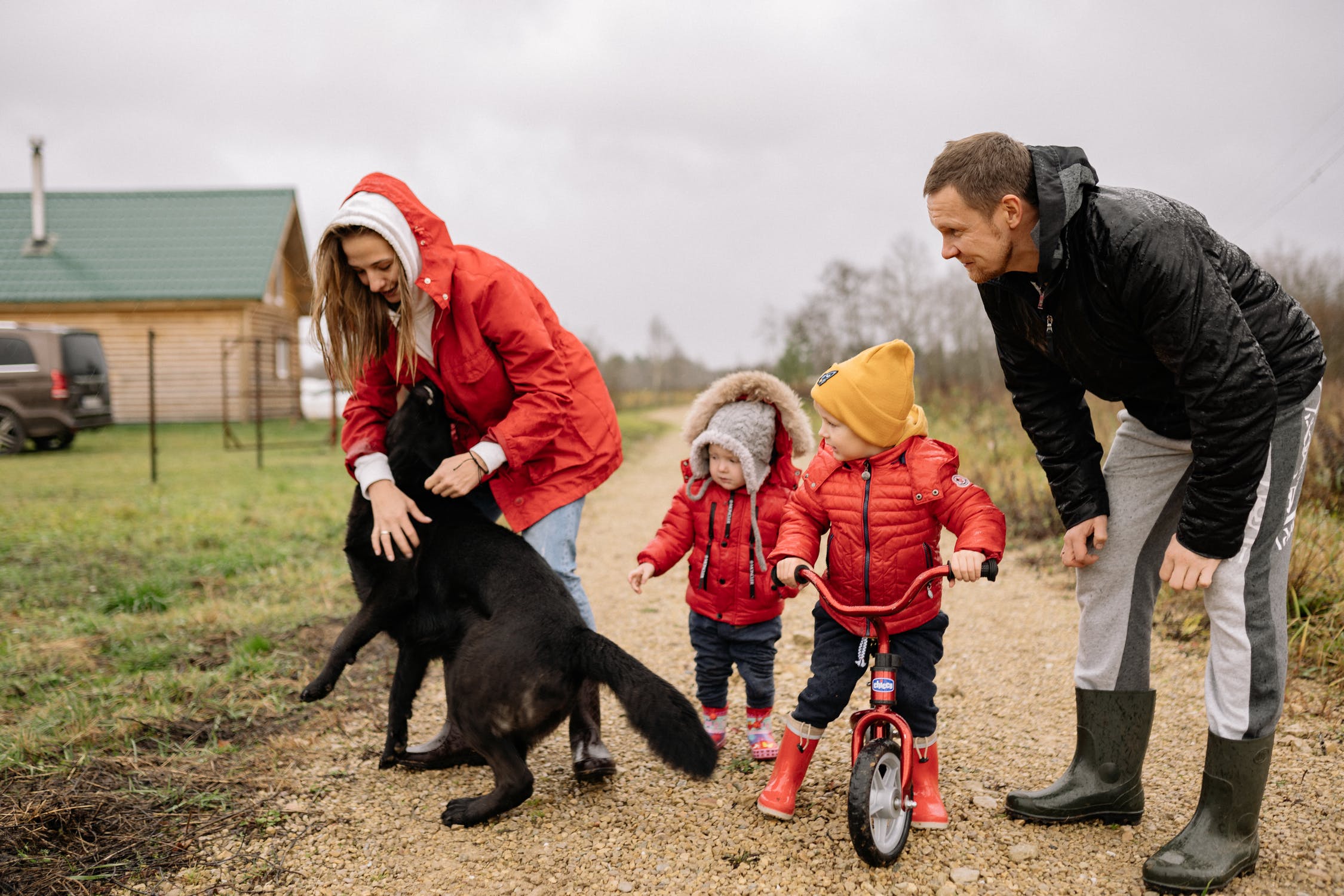Many of us have loved animals ever since we were little, but we can’t say that for everyone. It can be a problematic situation when one family member wants a pet, but not everyone is. Bringing a new pet home will be a huge step, and everyone in the family should have a say about it. There are many benefits of having a new pet, but the responsibility should not be taken lightly. If your family is contemplating adding a new addition to your home, here are some things that can help you decide.
1. When the Entire Family Is on Board
Getting a new pet because of one family member’s whims is really a bad idea. Imagine bringing a cat home and then realizing that your wife is terrified of cats. Or getting a Siberian husky, but your youngest kid is allergic to fur. Before you bring a pet home, make sure that everyone in your family is fully committed to getting one. Having a pet home is an exciting and fulfilling experience, however, if someone is not on board, it will be hard for everyone, including the pet.
Don’t just quickly assume that everyone will like the new pet. It would be best if you’ll do a serious sit down with everyone right from adults, teenagers, and young kids. If everyone made a mutual decision to add a new member to the family, then it is time that you can bring one home.
2. When the Family Is Financially Stable
You should be aware that the expense of having a pet can make a significant impact on your financial budgets. Having a pet is not just feeding and bathing them. You need to pay for many things like toys, regular check-ups, vaccinations, and medications. Moreover, microchipping, licensing, spaying or neutering can be expensive. Some people even compare getting a pet to having a baby.
Considering that you will get a cat or dog, they have a long life expectancy, so the expenses can undoubtedly pile up. You can see on www.charitypaws.com that they are continually raising funds for animals in need. And to raise money, they even do fun fundraising ideas for never-ending recurrent expenses. If your family is ready to spend the extra cash, and you can say that you are financially stable, then you have the ability to care for the animals.
3. When Everyone Can Take on the Responsibility and Give Time
Pets require a lot of time from their owners, they need to be fed, bathe, walk, or exercise and play with. They also need to be trained and be given affection. Everyone should be able to give time and take responsibility for the animal. And it should be the same with everyone, it is not enough if only two people can commit to it. What if they are away or sick? Who will take care of the pet?
Shoving responsibility to one person is never a good idea, it can annoy the person and can cause neglect to your pet. If all of your family members show readiness to give time and take on responsibility, then it can be safe to say that you are a lot of steps nearer to getting your pet.
4. When Everyone Are Comfortable Around Animals
As mentioned previously, it will be a terrible idea to get a pet if someone is scared, allergic, or plainly just don’t like them. If the issue is just being afraid, help them build up the comfort level around animals. People who are not comfortable or scared around animals will be most likely to mistake and hurt the pets or themselves. Ask everyone if they are willing to do a trial caring with friends, family, or neighbor’s pet. You can also visit animal shelters or even zoos to check if everyone in your family can be calm around them. Lastly, don’t force your family members to touch or interact with animals and let them come to terms with it at their own pace.
5. When Every Family Member Is Ready to Learn
Having something new in your life, no matter what it is, can be a challenging task. All should be willing to engage in learning how to deal and how to care for the pets. Every owner should know the pet’s proper nutrition, vet requirements, training, and everything about safety and health. If everyone is willing to learn for the sake of their pet, they can raise a happy and healthy companion for life.
We hope that upon reading this article, we helped you decide if you are now prepared to bring a new pet home. Just bear in mind that pet deserves our utmost love, attention, and even respect. Have fun, and good luck on your new pet journey!
6. No one in the family is allergic to animals
Be sure everyone in the house has had their allergies checked before getting a dog, a cat, or any other kind of pet, especially the elderly family members. Most frequently, children outgrow their allergies and build up an immunity to allergens. More than 15% of people in the US are allergic to cats and dogs. Acute allergic responses have been known to result in fatalities and a great deal of emergency room visits across the nation. In order to prevent this kind of situation and maintain the safety and health of your family, it is essential to check everyone.
7. Pets are permitted in your area or neighborhood
The area is important while caring for a pet because they require a place to walk, play, sleep, and do many other things. I can say that your pet doesn’t have a place on that location if your place has limits. Apartments typically do not offer the same degree of freedom. There are typically limitations on the kinds and sizes of pets that are allowed in many apartment buildings. The ability to make your own decisions, including whether or not to get a pet, is one of the numerous benefits of having a freestanding house. Also, if your house has a big enough yard, your pet dog can run about without restriction.
8. When everyone has a free time
Owners of dogs and many other pets frequently need to invest a lot of time in caring for them. They must be socialized with other family members, trained in house manners, given regular walks, fed, and bathed. Choose at least one or two family members who have enough free time each day to spend time with the animal, especially if it’s a dog. Spending time with your pet will help you develop your animal communication skills, making you a better pet owner.
9. You and your family are really serious about getting a pet
Before bringing your new pet home, be sure your child is committed to it. Establish whether the desire for a pet is a fleeting craze or a long-lasting desire, even if pet ownership seems like a chore. Children must also realize that not every pet is suitable for a household. Think about what pets will fit in with the time and space you have.
10. Your family has tried having pets so far
Before getting a pet, spend time around them. To give kids a taste of having a pet in their regular life, offer to take on a weekend of dog sitting in your own house. Cats, on the other hand, are not a good pet for a pet-sitting experience since they become stressed out by a change in surroundings, so it’s not a good idea to have one over for the weekend.
Advice on Taking a New Pet Home
Getting Everything Ready for the Kids and Other Family
Kids are inherently inquisitive and will undoubtedly be overjoyed by the introduction of a new pet. It’s crucial to let kids know that animals take some time to get used to new situations and may be fearful, tense, or suspicious of them for a few days. Spend some time teaching your kids how to treat your pet with the respect and care that they merit.
Veterinary Services
As most veterinarians have long waiting lists, it is advised to make an appointment as soon as you know you will be acquiring a new pet in order to have a comprehensive health or wellness check. This exam should ideally be completed a week after their arrival. Your new veterinary team can provide guidance on your pet’s immunization schedule and make sure there are no underlying illnesses or problems.
Getting Ready for Your Other Pets
Verify the immunization status of any additional pets that may be present in the house. Rehomed animals might bring new illnesses into the home that could spread to other animals already living there, whether you got your new pet from a breeder or an animal shelter. In the transfer phase, it’s crucial to calmly introduce your new pet to your current one. A prudent strategy is to introduce them to one another gradually until they are comfortable.
Initial Restriction of Visitors
Spending as much time as possible at home with your new pet will initially help them adjust to their new surroundings. It’s important to give everyone who lives in your house some alone time to get to know one another. Once your pet feels comfortable in the house, try to limit the number of new guests. It’s crucial that you and your family establish a bond with your pet first.
Potty train them
Patience is most definitely a virtue when it comes to training your pet. Maintain consistency and follow a schedule. Take your dog outside every day at the same time if you have one. First thing in the morning, last thing at night, and immediately following meals are all appropriate times to start.
Give Your Pets Access to Clean Water at All Times
Much like people, pets need simple access to water to survive. All animals in your care should always have access to a clean, fresh dish of water. To make it easier, put it close to their bowl of food. Don’t forget to refill your pet’s water dish at least twice daily. Your pet will remain cool, hydrated, and healthy as a result.
Make Sure Your Pet Exercises Frequently
Exercise is an important part of providing proper pet care. Exercise is essential for your pet’s health on both the physical and mental levels. Whether it is through frequent engagement with you, having visitors over, or going on outings, pets can benefit from socialization. While assisting them in securely experiencing new things, broaden their horizons and develop their interpersonal skills.


